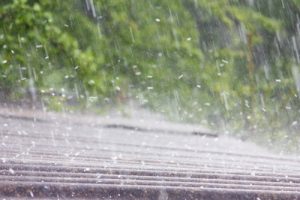 How Bad Weather & Storms Can Impact Your Roof
How Bad Weather & Storms Can Impact Your Roof
Bad weather and storms are a common occurrence in many parts of the world. While we often focus on the negative impact of these weather events on our daily lives, it is essential to consider the impact on our roofs. You may believe that your roof is sturdy enough to withstand any weather event, but nature has a way of reminding us that even the most robust roofs are susceptible to damage.
Here are the ways in which bad weather and storms can impact your roof:
1. Heavy Rain
Heavy rainfall puts your roof under significant pressure. It can cause water to pool on the roof, leading to leaks and other water intrusion issues. Additionally, heavy rainfall can cause your gutters to overflow, resulting in water damage to your walls and foundation.
To avoid the adverse effects of heavy rainfall, it’s important to ensure your gutters are in good condition and clean. Also, make sure there is no debris blocking the water’s flow. Furthermore, a qualified roofing contractor can inspect your roof and identify any areas that may be vulnerable to water damage.
2. High Winds
High winds can cause significant damage to your roof. Strong winds can lift shingles, exposing the underlayment and creating an entry point for water. Moreover, it can lead to the formation of holes in the roof, allowing debris and water to enter.
To prevent these issues, ensure your roof is in good shape and have it inspected periodically. It’s also essential to trim nearby trees and remove any dead limbs that may damage your roof during a storm.
3. Hail Storms
Hail storms can be the most destructive weather event that homeowners experience. Hail can cause dents and scratches, leading to significant damage that may require extensive roof repairs or replacement. In severe cases, hail can even break through the roof shingles and damage the decking beneath it.
To prevent hail damage, consider investing in impact-resistant shingles. These are shingles designed to withstand impacts from hailstones. Also, have your roof inspected after a hail storm to determine any damage that may have occurred.
4. Ice Dams
During winter months, ice dams can form on your roof, causing significant damage. Ice dams form when heat escapes from your home and melts snow on the roof, which then refreezes when it reaches the colder areas of the roof. This process can cause significant damage if left untreated.
To prevent ice dams, ensure your roof is well insulated and have it inspected periodically. In addition, clean gutters ensure that water can flow off the roof and prevent the formation of ice dams.
5. Extreme Heat
Extreme heat is another weather event that can impact your roof. Prolonged exposure to extreme heat can cause shingles to warp and curl, leading to cracks and other vulnerabilities in your roof’s structure.
To prevent damage from extreme heat, consider installing reflective roofing materials that can reflect heat away from your roof. In addition, ensure adequate ventilation in your attic to prevent hot air from building up beneath your roof.
Conclusion
In conclusion, bad weather and storms can significantly impact your roof’s structural integrity, leading to expensive repairs or roof replacement. Therefore, it’s essential to invest in periodic roof inspections by a qualified roofing contractor to identify and address any issues. Homeowners should also take preventive measures and engage in routine roof care to extend their roof’s lifespan.
It is crucial to prioritize your roofing system’s maintenance and address issues as soon as possible. Severe weather events may occur at any time; hence, your roof’s structural integrity should always be a top priority. Therefore, regularly inspecting your roof, trimming trees, and cleaning gutters can go a long way in preventing damage and prolonging your roof’s lifespan.
